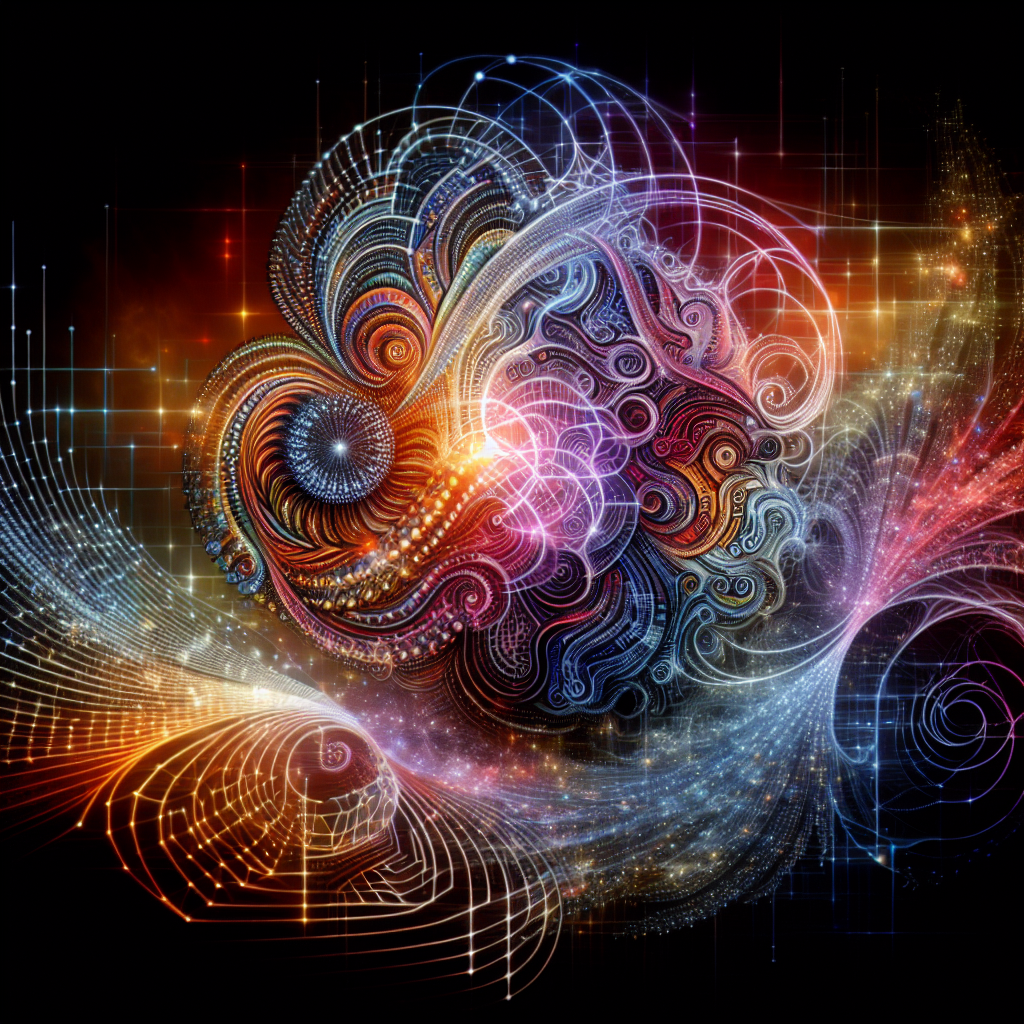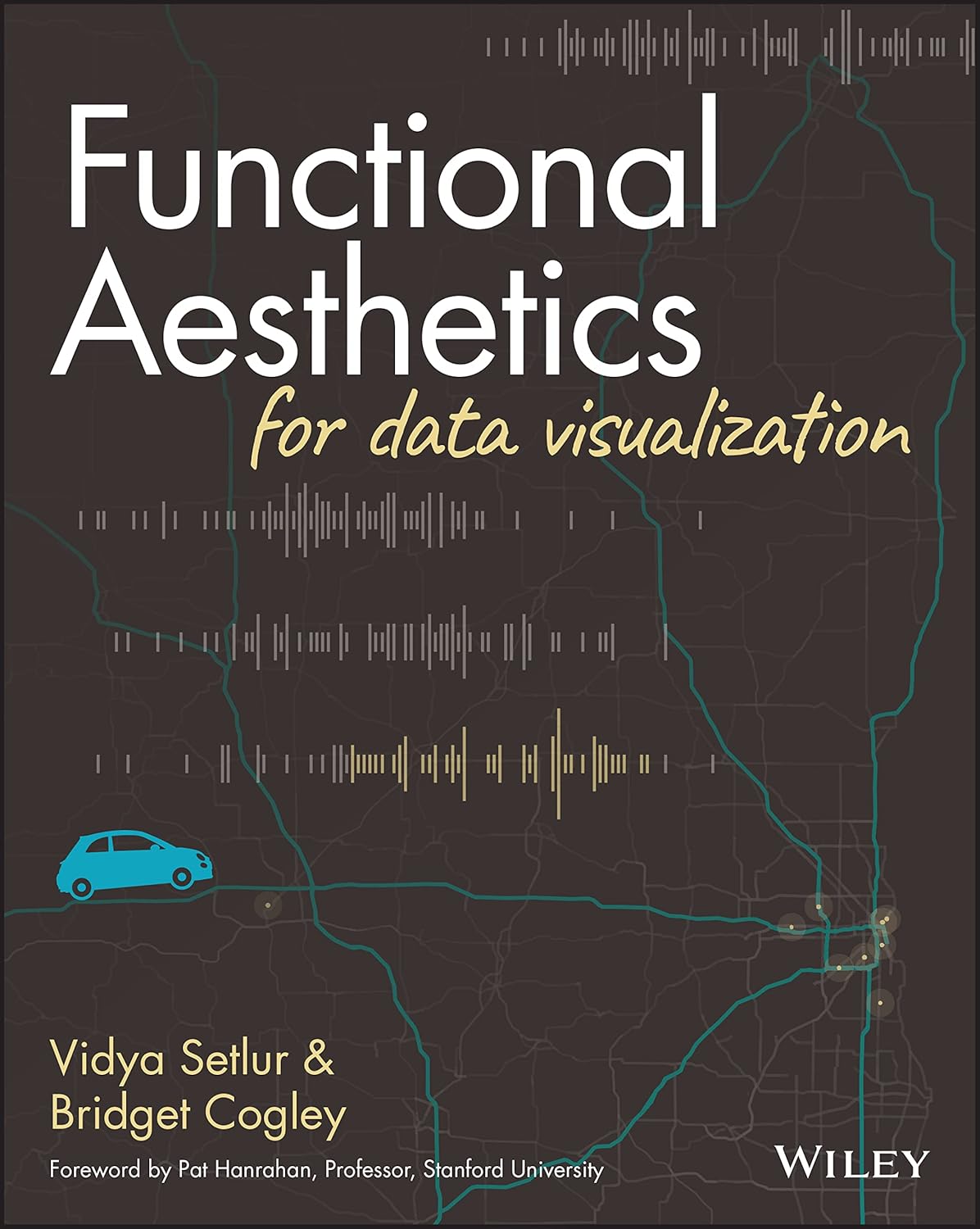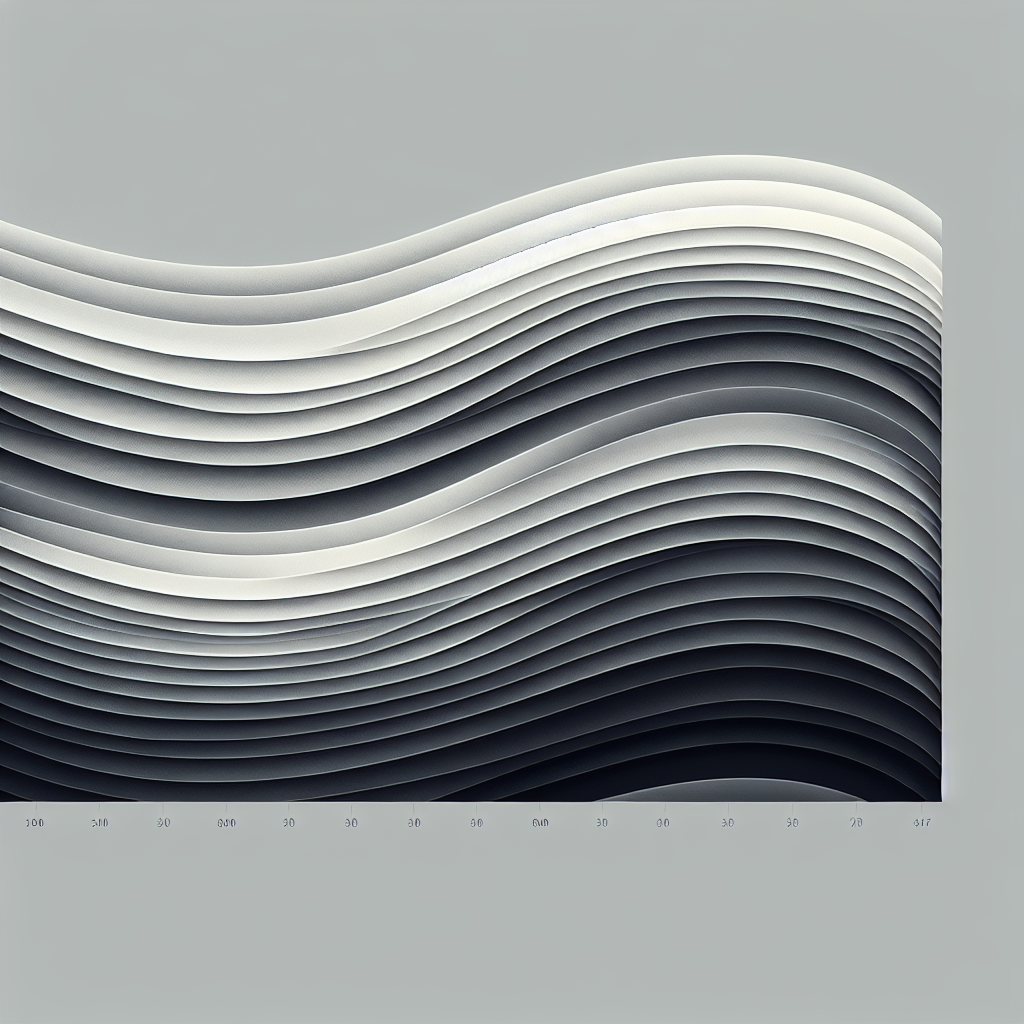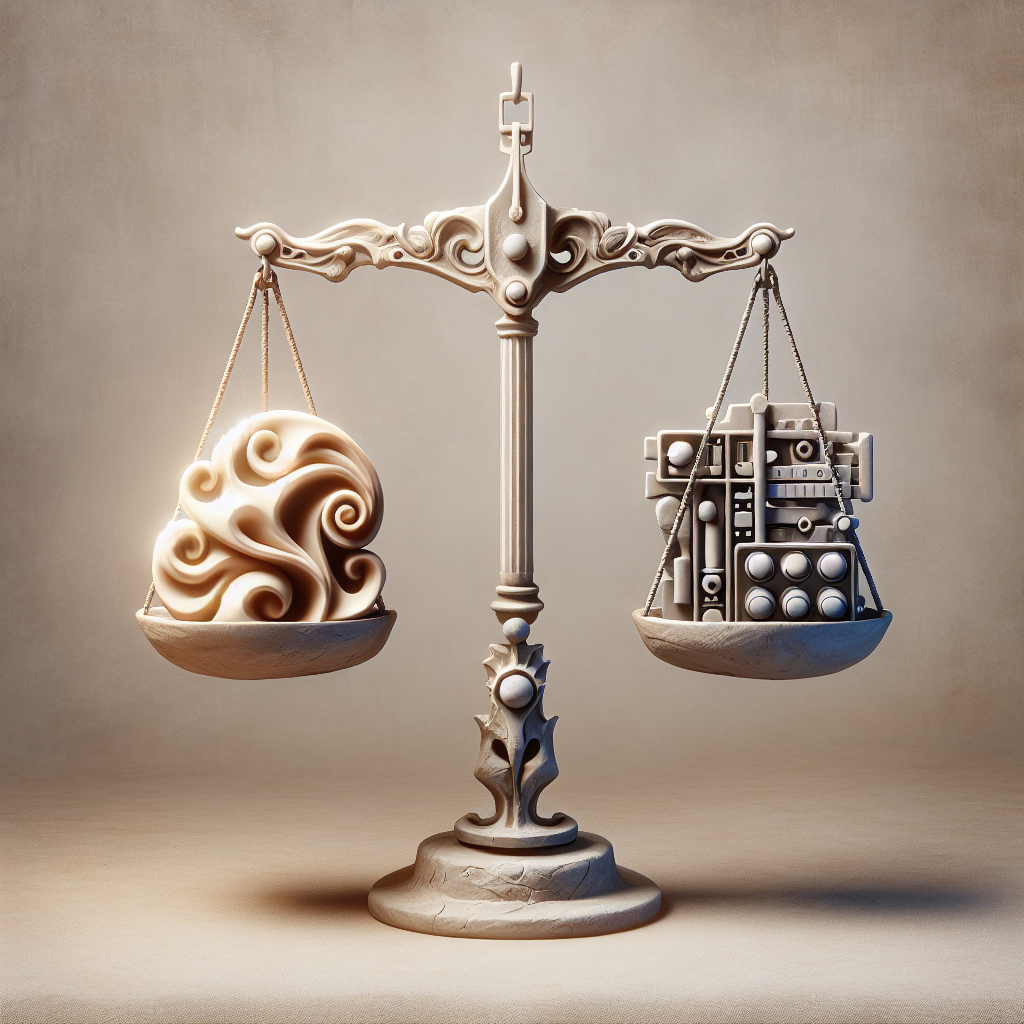Your cart is currently empty!
Tag: Aesthetics

The Beauty of Algorithms: How AI is Redefining Aesthetics in Art
In recent years, the intersection of art and technology has given rise to a new wave of creativity that is redefining aesthetics in the art world. One of the key players in this movement is artificial intelligence (AI), specifically in the form of algorithms.Algorithms are sets of rules or procedures that are used to solve problems or perform tasks. In the context of art, algorithms can be used to generate, manipulate, and analyze visual or auditory data. This has opened up new possibilities for artists, allowing them to explore new techniques, styles, and concepts that were previously inaccessible.
One of the most fascinating aspects of using algorithms in art is the way they can push boundaries and challenge traditional notions of beauty. By manipulating data in unexpected ways, algorithms can create artworks that are both familiar and strange, inviting viewers to reconsider their preconceived ideas about what constitutes beauty.
For example, algorithms can be used to create abstract paintings, generate intricate patterns, or even produce music that is both haunting and beautiful. These works often defy traditional categorizations, blurring the lines between different art forms and challenging viewers to engage with art in new and exciting ways.
In addition to creating new forms of art, algorithms can also be used to enhance traditional artistic processes. For example, algorithms can be used to analyze large datasets of art history, helping artists to identify patterns and trends that can inform their own work. This can lead to new insights and innovations in art, as artists are able to draw inspiration from a wide range of sources and traditions.
Furthermore, algorithms can also be used to personalize the artistic experience for viewers. By analyzing data on individual preferences and behaviors, algorithms can create customized artworks that resonate with each viewer on a personal level. This can help to create a more immersive and engaging experience for viewers, allowing them to connect with art in a more meaningful way.
Overall, the beauty of algorithms lies in their ability to challenge, inspire, and redefine aesthetics in art. By harnessing the power of AI, artists are able to explore new possibilities, experiment with new techniques, and create works that are truly unique and groundbreaking. As technology continues to evolve, it will be exciting to see how algorithms continue to shape the future of art and aesthetics.

Functional Aesthetics for Data Visualization
Price:$40.00– $25.24
(as of Dec 16,2024 00:07:18 UTC – Details)
Functional Aesthetics for Data VisualizationIn the world of data visualization, striking a balance between functionality and aesthetics is key to creating effective and engaging visualizations. While it’s important for data visualizations to be visually appealing, it’s equally important for them to effectively communicate the data they represent.
Functional aesthetics in data visualization involves designing visualizations that are both visually pleasing and easy to understand. This means carefully choosing colors, fonts, and layout that enhance the user experience and make the data easily digestible.
One key aspect of functional aesthetics is choosing the right type of chart or graph for the data being presented. Different types of visualizations are better suited to different types of data, so it’s important to choose the one that will best convey the message you want to communicate.
Another important aspect of functional aesthetics is using color and contrast effectively. Colors can be used to highlight important data points or trends, but it’s important not to overwhelm the viewer with too many colors or distracting patterns. Instead, opt for a clean, simple color palette that enhances the data without distracting from it.
Typography also plays a role in functional aesthetics. Choosing the right fonts and text sizes can make a big difference in how easily users can read and understand the information presented in a visualization. Make sure to use fonts that are easy to read and consider using different font weights and sizes to create hierarchy and emphasis.
Overall, functional aesthetics in data visualization is about finding the right balance between form and function. By designing visualizations that are both visually appealing and easy to understand, you can create compelling and effective data visualizations that engage and inform your audience.
#Functional #Aesthetics #Data #Visualization
Gray Expectations: How the Color is Redefining Modern Aesthetics
In the world of design and aesthetics, gray is often seen as a neutral, understated color. However, in recent years, gray has been making a big impact in the world of modern design. From home decor to fashion to graphic design, gray is increasingly being used to create sleek, sophisticated looks that are both timeless and contemporary.One of the key reasons for gray’s rise in popularity is its versatility. Gray can be warm or cool, dark or light, and can be used as a backdrop for other colors or as a statement color on its own. This flexibility makes gray a perfect choice for modern aesthetics, where minimalism and simplicity are key.
In interior design, gray is often used to create a calming, serene atmosphere. It pairs well with other neutrals like white and beige, as well as bold colors like navy blue or emerald green. Gray furniture and accessories can add a touch of elegance to a room without overwhelming the space.
In fashion, gray has become a staple color for both men and women. From tailored suits to casual sweaters, gray is a versatile shade that can be dressed up or down depending on the occasion. Gray accessories, like handbags and shoes, add a touch of sophistication to any outfit.
In graphic design, gray is often used as a background color to make other colors pop. It can also be used to create a modern, minimalist look that is clean and sophisticated. Gray is often paired with bold typography and graphic elements to create eye-catching designs that stand out.
Overall, gray is redefining modern aesthetics by adding a touch of sophistication and elegance to any design. Whether it’s in home decor, fashion, or graphic design, gray is a versatile color that can be used in a variety of ways to create a modern, timeless look. So next time you’re looking to update your space or wardrobe, consider incorporating some gray into your design scheme.

50 Shades of Gray: How This Color has Dominated Modern Aesthetics
In recent years, the color gray has taken the design world by storm, with its versatility and sophistication making it a popular choice for modern aesthetics. From home interiors to fashion and graphic design, the various shades of gray have become a staple in creating sleek and contemporary looks.One of the reasons why gray has become so dominant in modern aesthetics is its ability to complement virtually any other color. Whether paired with bold, vibrant hues or more muted tones, gray can act as a neutral backdrop that allows other colors to pop and shine. This makes it a perfect choice for those looking to create a cohesive and harmonious color palette.
Additionally, gray is a color that exudes elegance and refinement. Its cool undertones give off a sense of calm and tranquility, making it a popular choice for creating minimalist and sophisticated spaces. Whether used in furniture, wall paint, or accessories, gray instantly adds a touch of chicness to any room or outfit.
Furthermore, gray is a color that can easily transition between different design styles. Whether you prefer a more modern and sleek look or a more traditional and classic aesthetic, gray can adapt and blend seamlessly with various design elements. Its versatility allows for endless possibilities in creating unique and personalized spaces.
In popular culture, the book and movie series “50 Shades of Grey” also played a role in popularizing the color gray. The sleek and mysterious connotations associated with the color in the franchise helped elevate its status as a symbol of sophistication and allure.
Overall, the dominance of gray in modern aesthetics can be attributed to its versatility, elegance, and ability to complement a wide range of colors and design styles. Whether you’re looking to create a chic and contemporary space or add a touch of sophistication to your wardrobe, incorporating shades of gray is a surefire way to achieve a stylish and timeless look.

Form vs. Function: Balancing Aesthetics with Practicality in Form Factor Design
When it comes to designing products, whether it be a piece of furniture, a smartphone, or a building, designers are often faced with the challenge of balancing form and function. Form factor design is the process of creating a product that is not only visually appealing but also practical and functional.One of the key principles in form factor design is the idea that form follows function. This means that the design of a product should be determined by its intended use. For example, a chair should be comfortable to sit in, a smartphone should be easy to hold and use, and a building should be structurally sound. However, while function is important, form also plays a crucial role in the success of a product.
Aesthetics can have a significant impact on a consumer’s perception of a product. A well-designed product that is visually appealing is more likely to attract customers and stand out in a crowded marketplace. This is why designers often spend a great deal of time and effort on the aesthetics of a product, considering factors such as color, shape, and texture.
But it’s not just about making a product look good – it also needs to be practical and user-friendly. A product that is difficult to use or doesn’t meet the needs of the consumer will ultimately fail, no matter how visually appealing it may be. This is why designers must strike a balance between aesthetics and practicality, ensuring that the form of the product enhances its function rather than hinders it.
One way to achieve this balance is through user-centered design. By involving end-users in the design process, designers can gain valuable insights into how a product will be used and what features are most important to consumers. This can help designers make informed decisions about the form of the product, ensuring that it meets the needs and desires of its intended users.
In conclusion, form factor design is a delicate balancing act between aesthetics and practicality. While it’s important for a product to look good, it’s equally important for it to be functional and user-friendly. By considering both form and function in the design process, designers can create products that not only look great but also perform well and meet the needs of their users.

